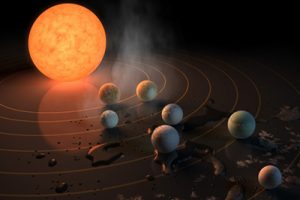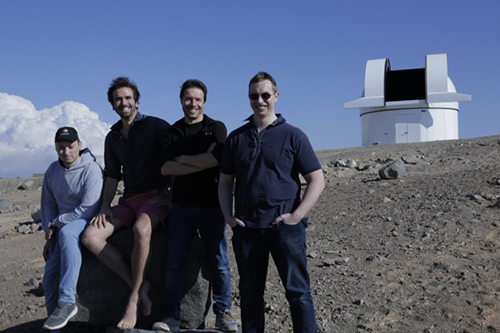Life after the Discovery of Seven Earth-Like Planets
-
-
slice.mit.edu
Filed Under
Recommended

The Europa telescope in Chile monitors the TRAPPIST-1 system.
After a team of scientists at MIT, the University of Liege in Belgium, and other universities discovered seven temperate Earth-size planets around a single nearby star, the search was just beginning. Julien de Wit PhD ’14, a postdoc in the MIT Department of Earth, Atmospheric, and Planetary Sciences, and collaborator to the initiative says the investigation first started while studying dwarf stars when three Earth-size planets were observed. Follow-up observations with the Spitzer Space Telescope revealed that there were in fact seven planets around the star and de Wit has taken the lead on their atmospheric characterization with the help of the Hubble Space Telescope.
All seven planets are tightly packed within a close distance of TRAPPIST-1, an ultracool dwarf star. “These planets are the first found beyond the edge of our solar system with a winning combination of properties to initiate the search for signs of habitability,” says de Wit.
So what makes them so special? All seven planets share these characteristics:
- Approximately the size of Earth
- Temperate, which means they could possibly harbor liquid water at their surface. By knowing properties of their star, it is possible to estimate how much energy arrives from it to them and can thus estimate how warm their atmosphere must be.
- Well-suited for imminent atmospheric studies. The ability to assess what their atmospheres are made of is essential to search for signs of habitability and signs of life.

Since the discovery of the first three planets of TRAPPIST-1 in September 2015, de Wit says things have been overwhelming and exciting. “Finding planets like TRAPPIST-1 that are amenable for the search of signs of life within the next generation is the primary objective of a larger project called SPECULOOS, a large-scale planet search."
“TRAPPIST-1 was found by a prototype telescope for the SPECULOOS project, called TRAPPIST,” says de Wit. “More than 50 stars like TRAPPIST-1 were studied before stumbling on a sign of planets around the star TRAPPIST-1. SPECULOOS will allow for the scale up of the planet search initiative by searching for planets around 1,000 stars like TRAPPIST-1.”
Although it will take years—signs of atmospheres or molecules in the atmospheres could take two-five years and assessing habitability and signs of life anywhere from five-20 years—de Wit says this was a huge milestone for learning about life on other planets. “TRAPPIST-1 (and hopefully other systems like it to be found) represents a Rosetta Stone for Earth-sized comparative planetology that will provide us with a completely new perspective on planetary systems.”









